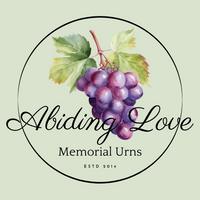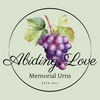
Celebrating Día de los Muertos
Celebrating Día de los Muertos
Día de los Muertos, or the Day of the Dead, is a vibrant and meaningful tradition deeply rooted in Hispanic culture, particularly among Catholic families. Celebrated on November 1st and 2nd, this holiday is not about mourning but about celebrating the lives of those who have passed on. Families gather to remember their loved ones with joy, love, and gratitude. They combine elements of their faith with cultural traditions that date back centuries.
For Hispanic Catholic families, the blending of cultural symbols with religious beliefs makes Día de los Muertos a uniquely personal and spiritual celebration. Here is a guide to understanding and honoring this beautiful holiday.
1. The Significance of Día de los Muertos Día de los Muertos is more than just a day to remember the dead; it is a celebration of life itself. Rooted in ancient Aztec beliefs, this tradition views death as a natural part of life’s cycle. Catholicism, with its teachings on eternal life and resurrection, meshes harmoniously with this perspective, allowing families to celebrate the lives of their loved ones while affirming their faith in the afterlife.
On this day, it is believed that the souls of the departed return to visit their families. The living welcome them back with altars, food, and festivities. This idea of connection beyond the grave brings great comfort and joy to those left behind.
2. Creating a Meaningful Altar (Ofrenda) One of the most recognizable symbols of Día de los Muertos is the altar, or "ofrenda." These altars are lovingly set up in homes, cemeteries, and even churches to honor the deceased. They are often adorned with photographs, candles, marigolds (cempasúchil), and personal mementos that remind the family of their loved ones.
For Catholic families, religious symbols such as crosses, rosaries, and statues of the Virgin Mary are often placed on the altar. These items represent the merging of their cultural heritage with their deep Catholic faith. Offering prayers at the altar for the souls of the departed is also a common practice, asking God to grant them peace and eternal rest.
3. Choosing the Right Urn for Día de los Muertos As families prepare to celebrate the lives of their loved ones during Día de los Muertos, choosing a personalized urn can be a special way to honor their memory. For Hispanic Catholic families, urn designs often incorporate cultural symbols like sugar skulls (calaveras), monarch butterflies (representing the soul's return), and religious icons like the Sacred Heart of Jesus or Our Lady of Guadalupe.
These personalized urns can be placed on the altar as part of the ofrenda, surrounded by candles and marigolds. This allows families to remember their loved ones in a tangible way, while also affirming their belief in the promise of eternal life.
4. Sharing a Meal Together Food is an integral part of Día de los Muertos celebrations. Families prepare the favorite dishes of their loved ones, such as tamales, pan de muerto (a sweet bread), and mole. These foods are placed on the altar and later shared among the living as a way to connect with the spirits of the departed.
For Hispanic Catholic families, this communal meal is a reminder of the Eucharist—the ultimate meal that unites the faithful with Christ and the saints in heaven. By sharing food and fellowship, families celebrate the bond they continue to have with their loved ones, both in life and in death.
5. Honoring with Symbols and Colors The colors and symbols associated with Día de los Muertos are both beautiful and meaningful. Marigolds, with their bright orange and yellow hues, are said to guide the spirits back to the world of the living. The use of skulls and skeletons, often depicted in a playful and lighthearted way, is meant to remind people that death is not something to be feared, but rather a continuation of the journey.
Incorporating these symbols into an urn design or memorial can create a lasting tribute that reflects both faith and culture. For example, an urn engraved with marigolds and religious symbols can be a unique way to combine traditional elements with personal touches.
Conclusion: A Celebration of Life and Faith Día de los Muertos is a time for Hispanic Catholic families to celebrate the lives of their loved ones in a way that honors both their cultural heritage and their deep Catholic faith. It is a joyous celebration of life, love, and the hope of eternal life through Christ.
Whether through building an altar, sharing a meal, or choosing a personalized urn, families can express their love for those who have passed on while reaffirming their belief that death is not the end. Instead, it is a continuation of the journey towards eternal life.



Leave a comment